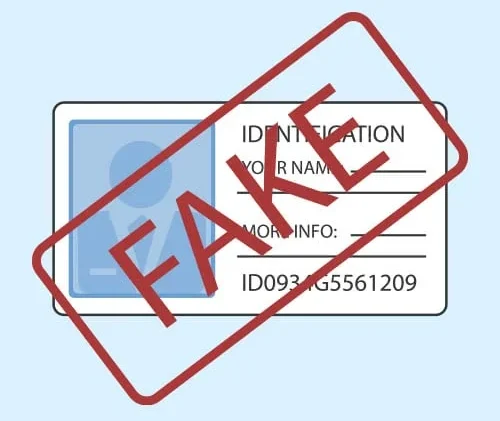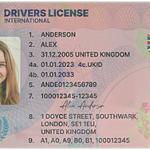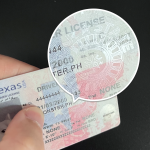Understanding Real ID: A Critical Identification Tool
A Real ID is a federally compliant driver’s license or identification card that serves as acceptable identification for domestic air travel, accessing federal facilities, and entering nuclear power plants starting May 7, 2025. Unlike standard state-issued IDs, Real IDs require stricter documentation to verify identity, social security status, and residency, making them a cornerstone of modern identity verification in the U.S.
For most applicants, the process follows a clear path: gather required documents, visit a Department of Motor Vehicles (DMV) office, and complete the application. However, individuals with complex addresses—such as those living with family, splitting time between multiple residences, using a post office (P.O.) box alongside a physical address, or recently relocating—often face unique hurdles. This guide breaks down the Real ID application process with a focus on addressing these complexities.
Key Documents for Real ID: Beyond the Basics
Before diving into complex address scenarios, it’s critical to outline the universal documents needed for any Real ID application. These include:
- Proof of Identity: A valid U.S. passport, certified birth certificate, or permanent resident card.
- Social Security Verification: A Social Security card, W-2 form, or pay stub with your full Social Security number (SSN).
- Proof of Residency: Two documents showing your current physical address, such as a utility bill, lease agreement, or bank statement.
- Proof of Name Changes: If your current name differs from your birth certificate (e.g., due to marriage, divorce, or legal change), provide a marriage certificate, divorce decree, or court order.
For applicants with complex addresses, the third requirement—proof of residency—often becomes the most challenging. Let’s explore how to navigate this.
What Constitutes a “Complex Address”?
A complex address typically involves situations where your physical residence doesn’t align with standard documentation formats. Examples include:
- Living with family or friends (e.g., “123 Main St, Apt B, c/o Jane Doe”).
- Splitting time between two homes (e.g., a primary residence and a vacation home).
- Using a P.O. box as a mailing address but residing at a separate physical location.
- Recent relocation with limited time to establish utility bills or official mail at the new address.
- Residing in a temporary housing situation (e.g., a shelter, RV park, or extended-stay hotel).
In these cases, standard proof-of-residency documents (like a utility bill in your name) may not exist, requiring creative but valid alternatives.
Step-by-Step: Applying for Real ID with a Complex Address
### Step 1: Research State-Specific Requirements
DMV rules vary by state. For example, California allows a notarized letter from a homeowner if you live with family, while Texas requires two documents showing your name and address—even if they’re from different sources. Visit your state’s DMV website or call ahead to confirm acceptable proofs.
### Step 2: Gather Primary Identity and SSN Documents
Start with the basics: your birth certificate or passport, Social Security card, and name-change documents (if applicable). These are non-negotiable, regardless of address complexity.
### Step 3: Focus on Residency Verification for Complex Addresses
Here’s where most applicants stumble. Below are strategies for common complex scenarios:
#### Scenario 1: Living with Family or Friends
If you reside at someone else’s address, you’ll need to prove both the homeowner’s residency and your own. Acceptable documents may include:
– A notarized letter from the homeowner stating you live with them, including their name, your name, the address, and the dates of your residency.
– A copy of the homeowner’s utility bill or lease agreement (to confirm their residency).
– A document showing your name at the address, such as a bank statement, insurance bill, or government mail (e.g., a tax notice or jury duty summons). Even if it’s forwarded, as long as it’s recent (typically within 60-90 days), it may qualify.
#### Scenario 2: Splitting Time Between Two Residences
If you spend significant time at two addresses (e.g., a primary home and a seasonal home), you’ll need to choose one as your “primary residence” for the Real ID. To verify this:
– Provide two documents from the chosen address (e.g., a lease, utility bill, or insurance statement).
– If the second address is in another state, include a letter explaining your living arrangement (e.g., “I reside at 456 Oak St, Cityville, from November to April and at 123 Main St, Townsburg, from May to October”) and include documents from both locations to support the timeline.
#### Scenario 3: Using a P.O. Box with a Physical Address
Real IDs require a physical street address—not a P.O. box. If you use a P.O. box for mail but live at a separate location:
– Submit two documents showing your physical address (e.g., a lease, utility bill, or school enrollment form).
– The P.O. box can be noted as a mailing address but won’t replace the physical address on the ID.
#### Scenario 4: Recent Relocation with Limited Documentation
If you moved within the last 60-90 days and lack utility bills in your name:
– Use a signed lease agreement (even if it’s a month-to-month rental).
– Provide a bank statement, pay stub, or insurance card with your new address (many companies update addresses quickly post-relocation).
– A letter from your employer on company letterhead, confirming your new address, may also work in some states.
#### Scenario 5: Temporary Housing (Shelters, RV Parks, etc.)
For those in temporary housing:
– Shelters often provide residency verification letters. Check with staff to see if they can issue a document with your name, the shelter’s address, and dates of stay.
– RV park residents can use a signed agreement with the park manager, including the park’s physical address and your stay dates.
– Extended-stay hotels may offer a letter or invoice showing your name, the hotel’s address, and payment records.
### Step 4: Visit the DMV and Submit Documents
Once your documents are organized, schedule an appointment (many DMVs require this to avoid long waits). Arrive early with originals—copies are rarely accepted. A DMV representative will review your materials, take your photo, and collect the application fee (typically $30-$50, depending on the state).
### Step 5: Receive Your Real ID
Processing times vary, but most states mail the ID within 10-15 business days. If there are questions about your address documentation, the DMV may contact you for additional proof.
Common Problems and Solutions for Complex Address Applications
Even with careful preparation, issues can arise. Below are five frequent challenges and how to resolve them:
Problem 1: “My name isn’t on any utility bills at my current address.”
– Solution: Use a combination of documents. For example, a notarized letter from the homeowner + a bank statement with your name and the address (even if it’s forwarded). Some states also accept a vehicle registration or insurance card showing the address.
Problem 2: “I moved recently, and my new address isn’t on any official mail yet.”
– Solution: Provide a signed lease agreement. If you’re renting from a private individual, include a copy of their ID and a notarized letter confirming the rental terms. Pay stubs or employer letters with the new address are also often accepted.
Problem 3: “I live in a rural area with no traditional street address (e.g., a farm with a route number).”
– Solution: Contact your local post office or county clerk to confirm the official address format. Provide a document from a government agency (e.g., a tax bill or voter registration card) that uses the rural address format.
Problem 4: “My address is listed as ‘c/o’ (care of) someone else on my mail. Will the DMV accept this?”
– Solution: Yes, if paired with additional proof. Include the “c/o” mail (e.g., a bank statement) and a notarized letter from the person you’re staying with, confirming your residency.
Problem 5: “I have a P.O. box but need a physical address for my Real ID. How do I get one?”
– Solution: Use the physical address where you sleep most nights. If you’re unsure, check your voter registration, vehicle registration, or tax returns—these often list your primary address. If you’re homeless, work with a local shelter to obtain a residency verification letter.
Final Tips for a Smooth Application
– Double-Check Documents: Photocopy all originals and keep them in a separate folder in case the DMV requests extras.
– Call Ahead: DMV policies change, so confirm acceptable documents with your local office before visiting.
– Be Patient: Complex address cases may take longer to process. If the DMV requests more info, provide it promptly to avoid delays.
By understanding the requirements and preparing tailored documentation, even applicants with complex addresses can successfully obtain a Real ID. The key is to anticipate potential issues, gather multiple forms of proof, and leverage state-specific flexibility where possible.


